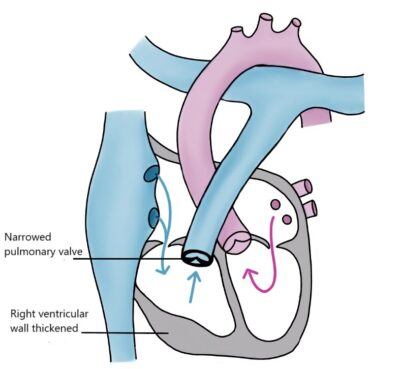Pulmonary Stenosis, PS
Pulmonary stenosis (PS) is a malformation that restricts the opening of the pulmonary valve. This condition produces a characteristic heart murmur, and therefore the diagnosis is usually made early. The workload of the right ventricle increases as it pumps blood through the narrow valve into the pulmonary artery at higher than normal pressure. The pulmonary artery enlarges behind the narrow valve.
Mild stenosis does not impair heart function or affect the patient’s condition and therefore does not require correction. Mild pulmonary valve stenosis generally remains stable. Severe pulmonary valve stenosis is corrected with balloon angioplasty during cardiac catheterization. A balloon (which actually resembles a small sausage in shape) at the end of the catheter is guided through the vein to the site of the pulmonary valve. The balloon is then inflated with fluid, and the pressure enlarges the narrow valve. This procedure is typically performed before school age and usually provides good and lasting relief.
If the valve does not close tightly, it is called pulmonary regurgitation or valve insufficiency. Pulmonary valve regurgitation is generally well-tolerated and usually does not require correction.
